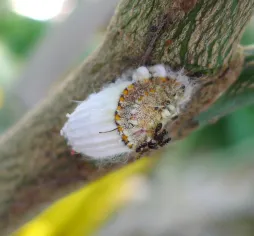Cryptanthus zonatus, the spectacular zebra plant
Endemic to northeastern Brazil, Cryptanthus zonatus belongs to the Bromeliaceae family. Nicknamed the zebra plant because of its green and white foliage, it is a rare species much sought after by collectors.
How to recognize Cryptanthus zonatus, the zebra plant?
Cryptanthus zonatus has a bushy habit. In its natural tropical habitat, this evergreen perennial grows to 30 to 40 centimetres in height, with an equivalent width. In our latitudes, it grows to a height of ten to fifteen centimetres, with a diameter of 20 to 30 centimetres.
Like cryptanthus acaulis, the plant has no stem. Its simple, long, fleshy leaves are arranged in a rosette. Blades are lanceolate and linear. Margins are serrated and wavy. The upper surface is rough to the touch. Bright green or brown, the foliage is dotted with irregular white or cream horizontal stripes.
Occasionally, in summer, the plant produces white, three-petaled flowers in its center, no more than 2.5 centimetres long. They are sessile and form a globular flower head.
The plant is non-toxic to humans and animals. It does not present any danger in the event of contact or ingestion.
Our maintenance tips
Cryptanthus zonatus are slow-growing. Often, one repotting after purchase or when taking cuttings is enough for their entire life. You can, however, repot the mother plant after flowering to give the offshoots room to develop.
Watering
When the soil has dried on the surface, you can water. Use non-calcareous water at room temperature, such as rainwater. If you don't have any, you can use tap water that you've left to stand.
Drain off any water that collects in the planter or dish. It can rot the roots.
Spray
In its natural environment, cryptanthus zonatus benefits fromhigh humidity. To make your plant feel at home in your home, regularly mist the top and bottom of the foliage with non-calcareous water at room temperature.
Repotting
In spring, transfer your Cryptanthus zonatus to a larger pot, so that it can continue to grow.
Cryptanthus zonatus like light, acidic soil. To meet their needs, it's best to create your own substrate by mixing equal parts sphagnum moss, sand and heather soil.
Get a pot with a ten-centimeter diameter hole and fill it with your mixture. Water generously.
Plant your Cryptanthus zonatus in the center. Pack gently.
In summer, you can place your pot on a dish of moist clay balls to increase humidity.
Fertilization
Add a special Bromeliad foliar fertilizer to the water when misting. Follow the dosage instructions to avoid damaging the foliage.
Prune
To encourage the growth of your Cryptanthus zonatus, prune regularly.
Cut back dry stems and wilted leaves. You can use a pair of scissors or pruning shears. Remember to clean them beforehand to prevent the spread of disease.
Cutting
Wait until the end of flowering to propagate your Cryptanthus zonatus.
After flowering, your Cryptanthus zonatus produces shoots. Wait until they are sufficiently developed to take them. You can separate them when the reservoir at the center of the rosette has formed and the cutting is at least a third of the size of the mother plant.
Fill a perforated pot about ten centimetres in diameter with a mixture of peat (50%) and sand (50%). You can also use the same substrate as for an adult plant, mixing one third sphagnum peat moss, one third sand and one third heather soil.
Water the potting soil. Plant your offshoot in the center and tamp lightly.
Disease / Threat
Information
| Family | Bromeliads - Bromeliaceae |
| Type | Cryptanthus - Cryptanthus |
| Species | Cryptanthus zonatus - Cryptanthus zonatus |
| Lifecycle | Perennial |
| Foliage | Evergreen |
| Exposure | |
| Substrat | |
| Planting method |
In pots |
| Category | |
| Tags |
Beginner Fritillary |
| Origin |
South America |
| Hardiness (USDA) | 12a |
| Leaf color |
|
| Flower color |
|
Discover plants from the same family
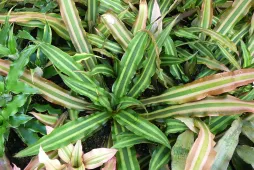
Cryptanthus bivittatus
Discover
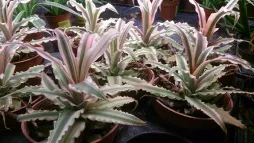
Cryptanthus 'Pink Starlite'
Discover
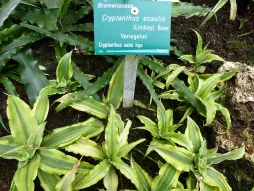
Cryptanthus acaulis
Discover
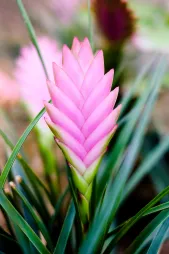
Tillandsia racket
Discover












